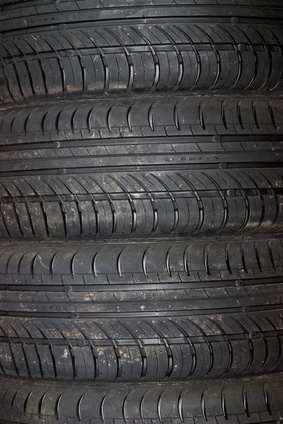
If your vehicle's tires all wear out at the same time, you can replace them all at once. However, sometimes one tire suffers a blowout, or there is a difference in the wear sustained by your front tires compared to the rear tires. In these situations, vehicle owners will only need to purchase one or two tires. In these cases, you should buy a replacement tire or tires that is comparable in model and size to the worn-out tire(s). This will provide you with optimum speed and handling power when driving. Yet, sometimes you may need to mix the sizes of the tires, or you may prefer to do so. When choosing to mix tires, you should adhere to the following guidelines for safety and performance.
Consult with a trained tire sales professional about which tires can be safely mixed, taking into consideration the size of the tires currently on your vehicle.
Choose two tires that are the same size to replace two of the tires on your vehicle. If you want different-sized tires on your vehicle, you need two of the same size. Don't try to replace only one tire in a different size.
Install, or have a tire technician install, both of the new tires on the same axle. Don't mix a new tire on the same axle with a tire of a different size. This will cause balance, handling and wear issues.
Install, or have the techician install, the lower series tires on the rear axle. The lower the sidewall height, the lower the series. Look at the tire and find the series of numbers, such as P205/55R16. The number after the slash, which in this case is "55," indicates the series. Compare the number of the new tires with that of your old to determine which tires should be installed on the front or back.